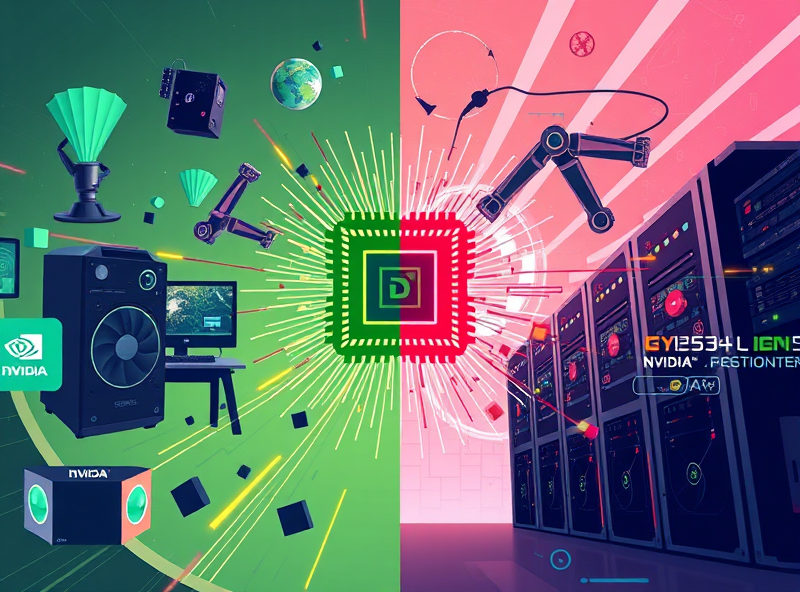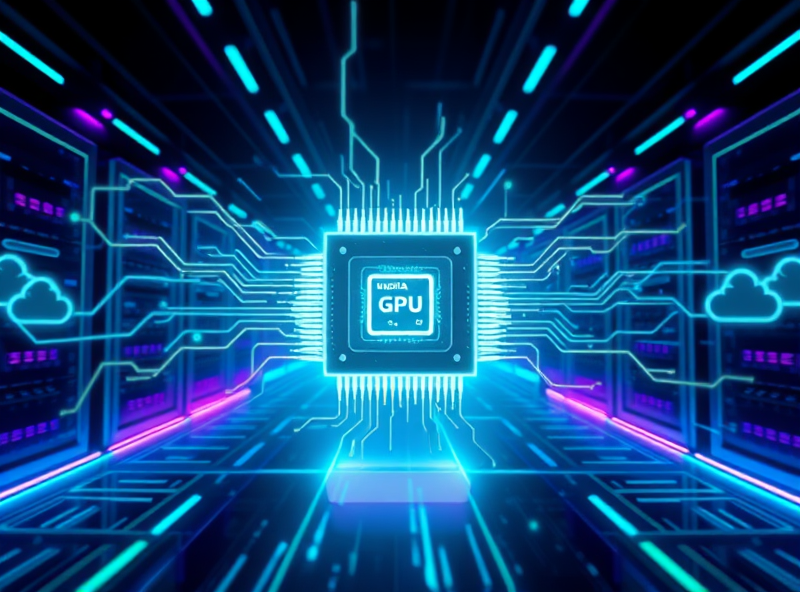
NVDA Stock: A Friendly Investor’s Guide to NVIDIA

Hello there, wonderful investors! Let’s talk about a company that’s been making huge waves in the tech world, especially when it comes to things like gaming, artificial intelligence, and data centers: NVIDIA (NVDA). You’ve probably heard the name, and maybe you even have one of their graphics cards in your computer! NVIDIA’s journey from a graphics chip maker to a leader in AI computing is a fascinating one, and it makes their stock, NVDA, a really interesting topic for investors. Let’s take a friendly look together!
NVIDIA is primarily known for designing and manufacturing graphics processing units (GPUs). Initially, these were mainly used for rendering graphics in video games. But it turned out that the architecture of GPUs, which allows them to perform many calculations simultaneously, is also incredibly well-suited for complex tasks like training AI models and processing vast amounts of data. This discovery propelled NVIDIA into new markets and has been a major driver of their recent growth.
Financially, NVIDIA has seen remarkable performance. As of late May 2025, its market capitalization is around $3.29 trillion, reflecting significant investor confidence. Over the trailing twelve months (ttm), the company reported massive revenue of $148.52 billion and a net income of $76.77 billion. These numbers are truly impressive and showcase NVIDIA’s dominant position in key technology sectors. In their first quarter of fiscal year 2025, which ended in April, NVIDIA reported record revenue of $26.0 billion, up 262% year-over-year, with data center revenue reaching a record $22.6 billion, up 427% year-over-year. This highlights the explosive growth in their data center business.
The Power of the GPU: Beyond Gaming
While gaming remains an important market for NVIDIA, the real story in recent years has been the expansion of GPU use cases. GPUs are now the backbone of modern artificial intelligence and machine learning. Training complex AI models, like those used in large language models or image recognition, requires immense computational power, and NVIDIA’s GPUs are currently the industry standard for this work. This has created unprecedented demand for their data center products.
The parallel processing capabilities of GPUs make them far more efficient than traditional CPUs for these types of tasks. NVIDIA has also developed a comprehensive software ecosystem, including CUDA, which makes it easier for developers to program their GPUs for AI and scientific computing. This combination of powerful hardware and accessible software has created a strong moat around NVIDIA’s business.
Dominance in the Data Center Market
NVIDIA’s data center segment has become its largest and fastest-growing business. Cloud service providers, large enterprises, and research institutions are all investing heavily in NVIDIA’s GPUs and related hardware to build out their AI infrastructure. This includes not just the GPUs themselves, but also networking solutions like InfiniBand (from their Mellanox acquisition) and complete server systems.
The demand is being fueled by the rapid advancements and adoption of AI across almost every industry. Companies are using AI for everything from improving customer service and automating processes to developing new drugs and conducting scientific research. NVIDIA is at the center of this revolution, providing the essential computing power needed to make it happen.
Gaming: Still a Core Business
Although data centers are driving the most explosive growth, gaming remains a significant and profitable part of NVIDIA’s business. Their GeForce GPUs are highly popular among PC gamers, providing the performance needed for the latest games. NVIDIA continues to innovate in gaming graphics with technologies like ray tracing and DLSS (Deep Learning Super Sampling), which use AI to improve game performance and visual quality.
The gaming market provides a stable revenue stream and helps fund research and development that can also benefit their data center products. The strong brand loyalty among gamers is also a valuable asset for the company.
Professional Visualization and Automotive
Beyond gaming and data centers, NVIDIA also serves other markets. Their professional visualization products are used by designers, engineers, and scientists for complex tasks like 3D modeling, simulations, and virtual reality. In the automotive sector, NVIDIA is developing platforms for autonomous driving and in-car infotainment systems. While smaller than their core segments, these areas represent additional growth opportunities.
Financial Performance and Growth Trajectory
NVIDIA’s recent financial results have been exceptional, largely driven by the surge in demand for their data center GPUs. The massive year-over-year revenue growth in Q1 FY25 demonstrates the strength of this trend. The company’s profitability has also soared, with high gross margins reflecting the value and demand for their specialized hardware and software.
Analysts are generally very positive on NVIDIA’s outlook, with many giving it a “Strong Buy” rating. The average 12-month price target from analysts is often significantly higher than the current stock price, suggesting potential for further appreciation. For example, some analyses indicate an average price target around $171.65 as of late May 2025, compared to a price around $134.81, implying notable upside potential [[4]](https://www.stocktargetadvisor.com/blog/nvidia-corp-nvda-technical-fundamental-analysis/). However, it’s worth noting that stock prices can fluctuate, and these are just predictions.
Risks and Challenges
Despite the bright outlook, NVIDIA stock is not without risks. The most significant risk is the potential for increased competition in the AI chip market. While NVIDIA currently has a dominant position, competitors like AMD, Intel, and even large tech companies developing their own in-house AI chips could challenge their market share in the future. The rapid pace of technological change also means NVIDIA must constantly innovate to stay ahead.
The stock price has also experienced significant volatility, reflecting high investor expectations. Any slowdown in AI spending by major customers or macroeconomic headwinds could impact demand for their products. Supply chain issues, although less prominent recently, could also pose challenges.
Understanding Valuation
Given its rapid growth and high profitability, NVIDIA’s stock often trades at a premium valuation compared to many other companies. This means its price-to-earnings (P/E) ratio and other valuation metrics might seem high. Investors are essentially paying for the expected future growth. Evaluating whether the current valuation is justified requires careful analysis of the company’s growth prospects, competitive landscape, and overall market conditions.
Conclusion: A Leader in the AI Era
NVIDIA has successfully positioned itself as a critical enabler of the artificial intelligence revolution. Its GPUs and software ecosystem are essential tools for training and deploying AI models, driving massive demand from data centers. While gaming remains important, the data center segment is the key growth engine. The company’s strong financial performance and positive analyst outlook reflect its current market leadership.
However, potential investors should be mindful of the risks, including increasing competition and potential market volatility. Investing in NVIDIA means believing in the continued growth of AI and NVIDIA’s ability to maintain its technological edge. As always, it’s crucial to conduct your own thorough research, understand your own financial goals and risk tolerance, and consider consulting with a financial advisor before making any investment decisions. Happy investing!



